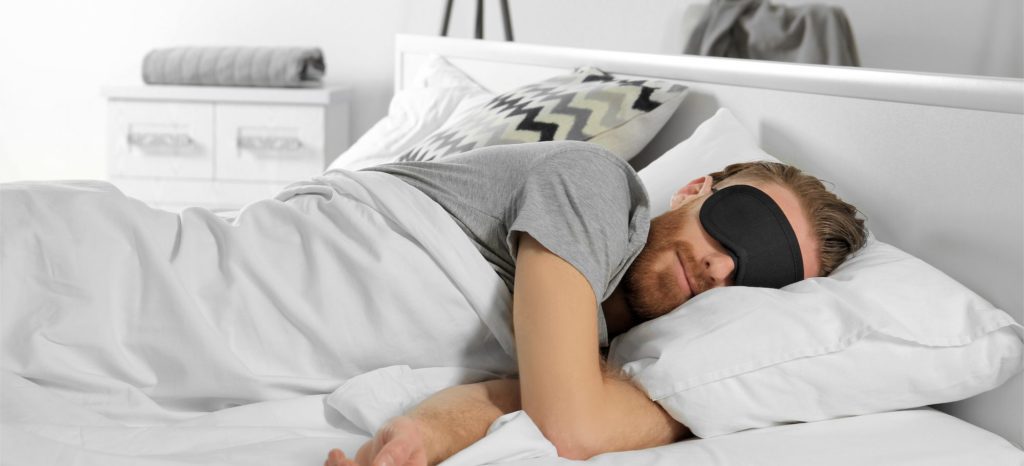Biphasic sleep is the practice of sleeping in two separate segments over 24 hours. Today, many people follow a monophasic sleep pattern and get all their sleep during one extended period, typically during the night. However, biphasic sleep was once common. Anthropologists and historians have described biphasic sleep patterns in many societies, from Nigeria and Brazil to Scandinavia and England.
Biphasic sleep is still found in certain Middle Eastern cultures and in Latin America and the Mediterranean, where people may take afternoon naps called siestas. However, it has become less popular with the expansion of artificial light and modern work schedules.
In recent years, some researchers have explored whether there are benefits to biphasic sleep. Although some studies suggest that afternoon naps can improve alertness and thinking, others have found mixed results.
Many unresolved questions remain about monophasic and biphasic sleep, but learning about the science and history of biphasic sleep may help you better understand its potential benefits and drawbacks.
What Is Biphasic Sleep?
People who practice biphasic sleep have two separate periods of sleep every 24 hours. There are two main approaches to biphasic sleep.
- Two nighttime sleep periods: This type of biphasic sleep involves splitting nighttime sleep into a “first” and “second” sleep with a period of wakefulness in between.
- Nighttime sleep with a daytime nap: This approach involves one sleep period at night combined with a nap, or siesta, in the afternoon.
Biphasic Sleep vs. Monophasic and Polyphasic Sleep
There are important differences that are evident when comparing biphasic sleep to other sleep patterns.
- Biphasic sleep vs. monophasic sleep: Many people today maintain a monophasic sleep schedule and get all of their rest in one long block of nighttime sleep. In a biphasic sleep pattern, the individual divides their total daily sleep time into two segments. They may sleep for a shorter period at night and take a long daytime nap, spend most of the night sleeping and take a brief nap during the day, or split nighttime sleep into two separate periods.
- Biphasic sleep vs. polyphasic sleep: While biphasic patterns divide sleep into two parts, polyphasic sleep involves numerous short blocks of sleep across a 24-hour period. A polyphasic pattern reduces nighttime sleep and involves multiple daytime naps. Some polyphasic sleep plans seek to reduce the total number of hours an individual sleeps each day, while others develop as a result of work or religious obligations.
Typical Biphasic Sleep Schedules
Different cultures have maintained a variety of biphasic sleep schedules throughout history, and some people continue these sleep patterns today. There are several common biphasic patterns worldwide.
Siesta
For those following a siesta schedule, a nightly sleep period lasts for several hours, and then a long nap occurs in the afternoon. This practice developed in certain Mediterranean cultures as a way to stay cool during the hottest part of the day. Siestas are common practice in Spain, Italy, and some Latin American and Middle Eastern countries.
Midday Nap
This schedule includes a nightly sleep period that lasts for several hours. Then a short nap occurs sometime during the day, often in the afternoon. This pattern may not involve a reduction in sleep at night and is used by many people in cultures that predominantly follow monophasic sleep patterns. This type of sleep schedule is common worldwide.
First and Second Sleep
Nighttime sleep is divided into two distinct segments. An earlier bedtime starts the first sleep period, which lasts several hours, often until around midnight. One or more hours of wakefulness are followed by a second sleep of several hours. Some Middle Eastern countries follow this sleep schedule, along with certain South American and West African cultures.
Is Biphasic Sleep Good For You?
There is no definitive evidence that biphasic sleep is better or worse than monophasic sleep. Some research suggests that biphasic patterns are natural adaptations to environmental changes. In one study, a group of people who were exposed to fewer hours of light during the day began splitting their nighttime sleep into two distinct segments divided by several hours.
Similarly, many historical cultures are believed to have adopted biphasic sleep patterns in response to seasonal shifts in weather, daylight, and food availability. However, biphasic sleep practices are also common among people who live near the equator that do not experience many seasonal changes. While this may indicate that biphasic sleep comes more naturally than monophasic sleep in some situations, more research is needed to determine which sleep patterns, if any, are better than others.
Whether sleep is monophasic or biphasic, it is important to get enough hours of total sleep each day. For most adults, experts recommend sleeping seven to nine hours per night in order to promote physical and mental health.
Benefits of Biphasic Sleep
Although still debated by sleep researchers, there are some suggested potential benefits of biphasic sleep.
- Better cognitive performance: Evidence suggests that, under certain conditions, napping positively affects memory, alertness, and coordinated thinking. An analysis of 11 studies found that individuals who regularly took a short nap in the early afternoon demonstrated significant improvements in cognitive performance. Short midday naps have also been found to benefit older people with problems like memory loss.
- Improved quality of life: Some people who find it hard to sleep through the night report that adjusting to a biphasic sleep pattern has improved their quality of life. That said, doctors emphasize that more research is needed to better understand the long-term effects of segmented sleep.
- Accommodate complex schedules: In some countries and cultures, people practice biphasic sleep because having a first and second sleep allows them to socialize, keep watch, or perform certain tasks. In some predominantly Muslim cultures, biphasic patterns can allow people to complete the five prayers they are required to say every 24 hour period.
Drawbacks of Biphasic Sleep
Switching to biphasic sleep can also have potential drawbacks.
- Certain health risks: Some studies have found napping to be associated with cardiovascular disease, falls, and cognitive decline in older people.
- Sluggishness: Napping for more than 30 minutes can lead to a confused, groggy state upon waking. In this way, the nap portion of a biphasic sleep pattern may not provide restorative rest. People who sleep during the day may also struggle to get adequate rest at night or feel sleepy during the day.
- Interfering social obligations: Adhering to conventional work or school schedules generally requires people to be awake during the majority of the daylight hours and sleep mainly at night. Cultural attitudes toward napping, particularly in North America, can make it hard to find time or space to nap during a busy day.
- Not enough quality sleep: Recent research on segmented sleep has revealed that people who practice biphasic sleep are more likely to report poorer sleep quality and more daytime sleepiness. Although the reasons remain unclear, some researchers hypothesize that segmented sleep may change how the body regulates sleep homeostasis and the circadian rhythm.
Is Biphasic Sleep Practical?
Biphasic sleep is still common in some societies. Segmented sleep patterns are often more practical in cultures where work, social activities, and religious schedules are cyclical or change according to the seasons.
Although most people in the United States are monophasic sleepers, some people choose to adopt a biphasic sleep pattern. If you are interested in trying biphasic sleep, certain measures may make the transition easier.
- Choose a pattern that fits your lifestyle: Try a biphasic sleep pattern that suits your work schedule, environment, and social life. For example, if you work in the evenings and want to be more focused on the job, you may benefit from taking a short midday nap. If you have trouble sleeping through the night, trying a first and second sleep pattern might help you get better rest.
- Avoid artificial light: Some studies indicate that reduced exposure to light can change the internal rhythms that drive our sleep cycles, causing a natural shift to a biphasic sleep pattern. The increased use of artificial light is also linked to monophasic sleep cycles. Try to limit exposure to artificial lights, including laptops, TVs, and smartphones, for at least an hour before bed.
- Maintain a consistent sleep schedule: It may take some time to adjust to a new sleep pattern. Maintaining a bedtime routine and going to bed at the same time each night may help make the adjustment easier. If you plan to adopt a midday nap or siesta pattern, consider trying to nap at the same time every day.
- Keep a sleep diary: As you shift your daily sleep, you can keep a log of your sleep times and how you feel when you wake up and during the course of the day. You can use the diary to help make sure that you’re getting enough hours of sleep every day and to look for any trends in how biphasic sleep is affecting your energy level and alertness.
What Is the History of Biphasic Sleep?
Biphasic sleep was once a common practice worldwide. Before industrialization made artificial light commonplace and new occupations demanded a monophasic sleep pattern, many societies followed a sleep schedule with a first and second nighttime sleep.
Historically, people tended to stay awake until their work was done instead of going to bed at a fixed time. In some cultures, a first sleep, second sleep pattern helped people keep watch for wild animals and other dangers in the night. In others, siesta practices allowed individuals to rest during the hottest part of the day.
Preindustrial societies relied on natural light from the sun, moon, and stars, and many also used candles and oil lamps. However, many cultures began abandoning segmented sleep patterns with the expansion of artificial lighting and adapted to sleeping for one long period during the night.
Today, biphasic sleep patterns can be observed among people all over the world despite widespread access to electricity. Nearly one-third people in the United States report taking a nap every day. In Japan, it is widely accepted that taking a brief nap during work hours improves morale and productivity.
Afternoon siestas, though less common than they were in previous generations, are still practiced among many people in Mediterranean and South American countries. In Muslim cultures, some people segment sleep with a long nighttime awakening or a long afternoon nap in order to practice daily prayer rituals.
Frequently Asked Questions About Biphasic Sleep
Biphasic sleep is a practice in which a person divides their sleep into two segments across a 24-hour period. One common biphasic sleep pattern splits nighttime sleep into two portions with a period of being awake between them. Other biphasic patterns include one sleep period at night combined with a daytime nap. Naps frequently occur in the afternoon, and longer naps are usually associated with shorter nighttime sleep periods.
Biphasic sleep is still practiced in many cultures around the world. For example, some Islamic people adopt a biphasic sleep pattern to help accommodate their daily prayer schedule. Some cultures that do not use artificial lighting also practice biphasic sleep. Individuals may try biphasic sleep to help address insomnia, improve their thinking and alertness, or even to remember their dreams.
There is not enough evidence to determine if biphasic sleep is more natural or better for your health than monophasic sleep. Biphasic sleep may be more useful for some individuals or groups of people than others. However, more research is needed to determine who will and will not benefit from adopting an alternative sleep cycle.
References
Get Your Sleep Questions Answered Live on 4/30
Have questions about sleep? Get all your sleep-related questions answered in a Live Q&A on YouTube with renowned sleep expert Dr. Michael Breus at 5 p.m. PST/8 p.m. EST.








